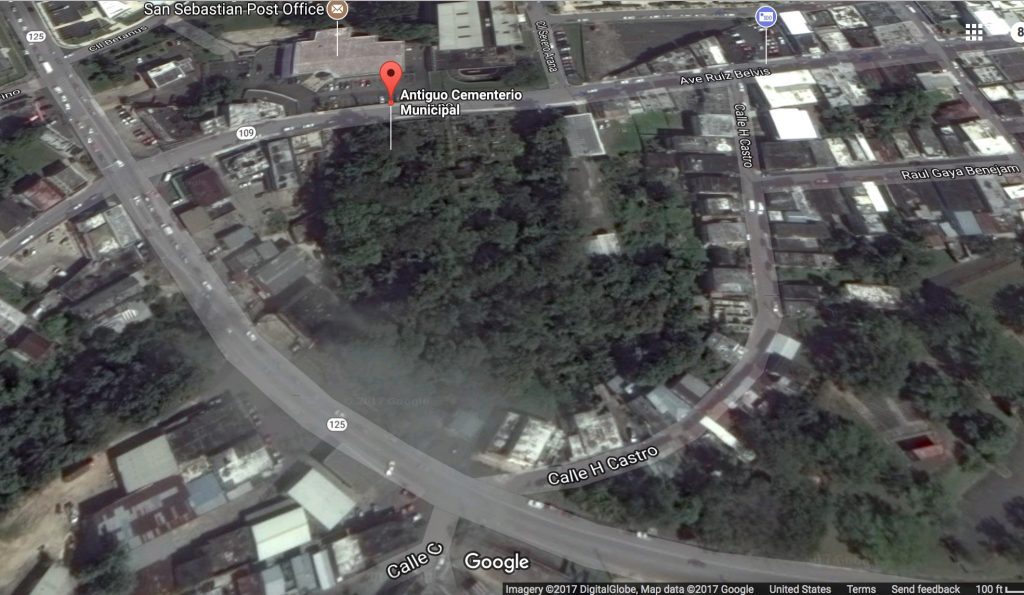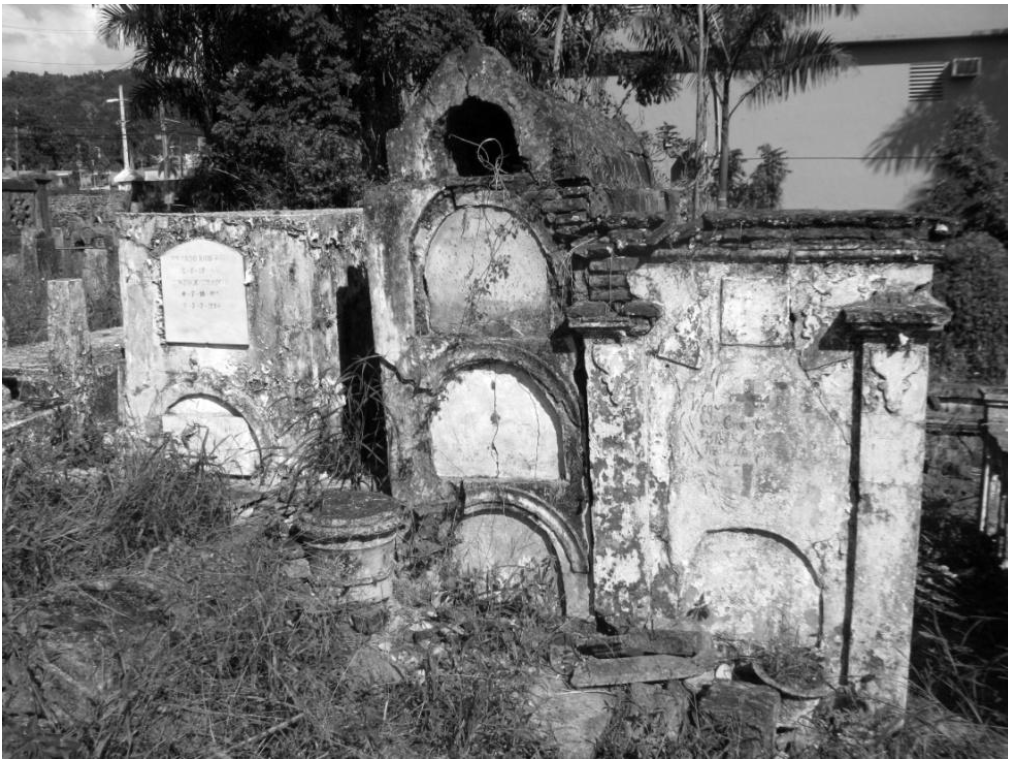
Much has happened since this blog post was written in 2012– the Cementerio Antiguo de San Sebastian in NW Puerto Rico was placed on the Historic Register (Ley Numero 158 of 9 Aug 2016), and it was the subject of several articles, in the Sociedad Puertorriquena de Genealogia‘s Hereditas , as a featured virtual site on KooltourActiva.com with lots of historical detail, and in the local press. In November 2016, Lester Jimenez reported in Primero Hora that conditions at the Cementerio had totally deteriorated, despite years of effort by a dedicated committee, led by Lic. Gladys Gonzalez Colon, the Sociedad Protectora Antiguo Cementerio Municipal del Pepino to gain support for its preservation.
As of September 2017, with the arrival and destruction of Hurricanes Irma & Maria, the question of preservation remains moot. Like many communities in the Caribbean Basin, reconstruction continues and life itself on the islands is a daily struggle for water, food and electricity.
We must not forget that we are all connected, despite the messages sent by some in power.
From August 2012

The excitement one feels when the past feels tangible through the records of ancestors and discovering the places they lived or were buried is profound.
Imagine then, what happens when one visits a site expecting to find a legible trace, and instead, discovers a 14 acre cemetery that is under active desecration. This was not simply finding broken tombstones, but instead, an overgrown place where coffins have been disinterred, bodies exhumed, bones stolen; where drug paraphernalia, beer bottles, animal and human feces along with clothing and underwear are strewn on the ground and within graves, where rituals are held and possibly, where bodies are now dumped. Broken coffins and bones are strewn all over; the tropical heat makes for an incredible stench. Most identifying information has disappeared from the gravesites, and I don’t know whether the cemetery exists in archival form. This is what’s left of one of the oldest cemeteries in NW Puerto Rico. It is enough to make one cry.
The Cementerio Viejo de San Sebastian is an open secret of sorts. One goes to the Mayor’s Office and asks to visit, and one is taken by a caretaker, who warns of the problems, opens the gate and then departs. Left alone, one is left shaken by the experience– things are indeed bad on the island, but frankly, one is unprepared for this. The main gate is locked, and in another area behind another locked gate with a bar is a spot where the living go to urinate. There’s plenty of places where people climb in, and go to take pieces of bodies, as if that will build their power. It is not a place to contemplate death, but to consider how it’s perpetrated on the living. This is the first time i’ve heard just how destroyed the site is. It leaves one with jaw agape. Te deja con boca abierta.
The original intent in visiting the Cementerio, first built in 1826, and re-established in 1863 was to find traces of a connection to the past, to see the names of ancestors, and it makes most cemeteries stateside seem downright bucolic in comparison. What of this cemetery as cultural resource and as a historical site? Is it a problem or a reflection of how violent life has become on an island that the US has squeezed for human capital and corporate benefit since 1898? What of this new traffic in bones?
Can anything be done? Although life is for the living, this is a situation that highlights the island’s historic lack of infrastructure, and sadly, the closeted nature of what can lurk under the label ‘bad condition’. A search quickly reveals that similar situations exist in other countries in Latin America and Europe, complaints that echo those made by a doctor in Spain in the medical journal Pabellón médico back in 1863. There was no germ theory then, just the belief that illness was carried in bad smells.
Perhaps whatever records remain is all there is of the Cementerio Antiguo after all.
Genealogy, as a friend noted, can break your heart.
Have you had a similar experience? Please feel free to comment.
PS: Grave robbing was still happening as of a couple of weeks ago.

